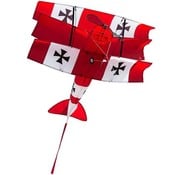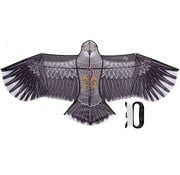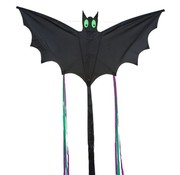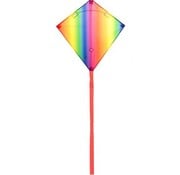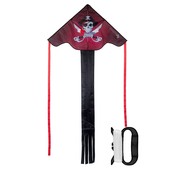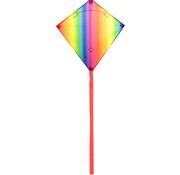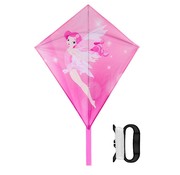Single-line kites are static kites. This means that they remain stuck in one place. They are not controllable.
The single-line kite has its origins in China, where it was probably invented 1000 years BC. This has to do with the fact that a lot of bamboo was available there and bamboo is a perfect material for kite frames.
Single-line kites vary in size and can be very small or very large. The large single-line kite is used for advertising purposes or for observation at a few hundred meters and can lift an adult man.
The material of the single-line kite does not have to be of great quality. In contrast to the two-line kites, they suffer few blows.
The frame consists of simple slats made of plastic or bamboo and the sail of the kite is made of plain plastic material. The shape can be diamond or delta, but tunnels or other shapes are also possible. As long as the shape has the right shape to hang stably in the air from 1 point.
The line of the kite may have some stretch and the weight is also of unsuitable importance. As long as the kite can carry the weight. You often see the line hanging in a large arc under the kite
A single-line kite is also easy to make in the shape of a diamond, where weight can be mounted on a line at the bottom for extra stability.
The single-line kite is a first introduction to the power and possibilities of the wind. They are available with fantastic prints of birds, insects, airplanes, dragons or Disney characters. You can't imagine anything crazy and there is a kite of it.
In the Netherlands it is not allowed to fly a kite higher than 100 meters. Kites are also not allowed to be flown within a radius of 500m from a high-voltage cable, within a radius of 5km from a controlled aerodrome.


